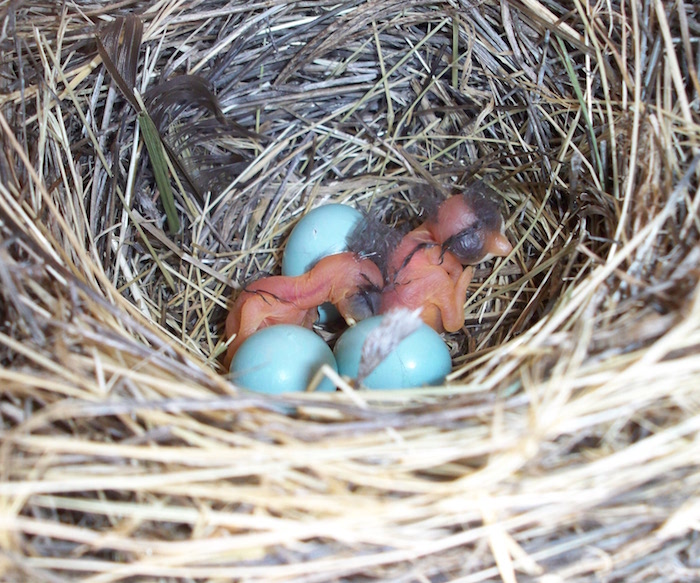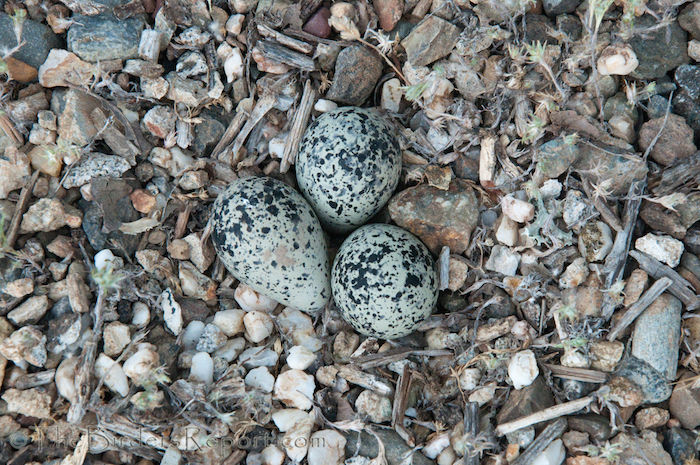Eggs came first. There. Now you know. Eggs were around long before there were chickens, or any birds at all.
Egg-laying dominates the history of vertebrates, who appear in the fossil record in FARMB order: Fish, Amphibians, Reptiles, Mammals, and Birds. Of them all, only mammals regularly practice live birth. The other classes all lay eggs, and seeming exceptions of live birth are usually illusions—the mother actually makes eggs, but she retains them in her body until they hatch, and then delivers her wrigglers to the outside world.
That little evolutionary trick can be quite useful. Here in California, for instance, the southern alligator lizard lays eggs. The northern alligator lizard, however, keeps her eggs inside. This allows her to move them to warm spots throughout the day, spurring their development. Where the warm season is short, that accelerated development can mean the difference between the young growing up enough to endure the coming winter or perishing quickly.
Birds, of course, have a premium on light weight, so retaining eggs in their bodies is not a good option. Indeed, in the service of minimal mass, most female birds develop only their left ovary, and even that shrinks to a speck outside the breeding season. During nesting season, however, that ovary is full and busy, typically producing an egg a day several days in a row—what chickens have been bred to do year-round.
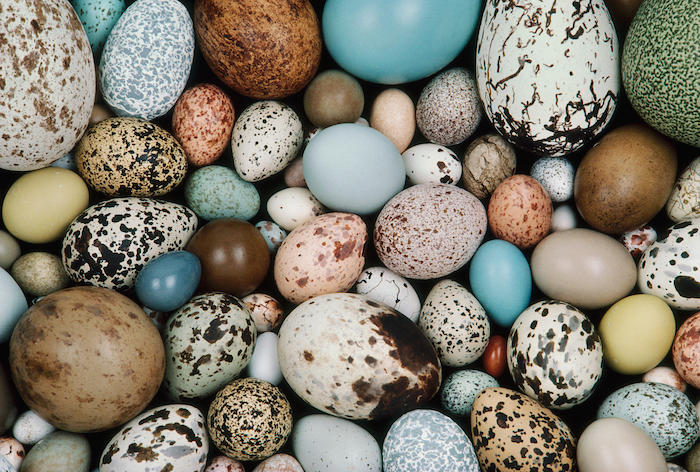
Initial bird development is similar to that of humans. The ovary releases a protein-rich ovum which can then be fertilized.
But at that point, where humans will feed their young placentally, birds must prepare a self-sustaining egg. The ovum gathers its golden protein-rich yolk, which in turn is joined by albumen, the egg white. The albumen consists of water and more protein for the developing chick. Uterine cells squirt that eggy blob with calcium carbonate, which hardens into the smooth shell that curves round the birds’ precious hope of life. Egg farmers know that sufficient calcium in the mother’s diet is vital to forming viable eggs. Where calcium is lacking, a mother bird may donate up to 10% of the eggshell from her own bones.
With the egg formed, other cells squirt the species’ pigmentation onto its surface. Only two pigments, a blue-green and a red-brown, create all the variety of patterns and colors on birds’ eggs.
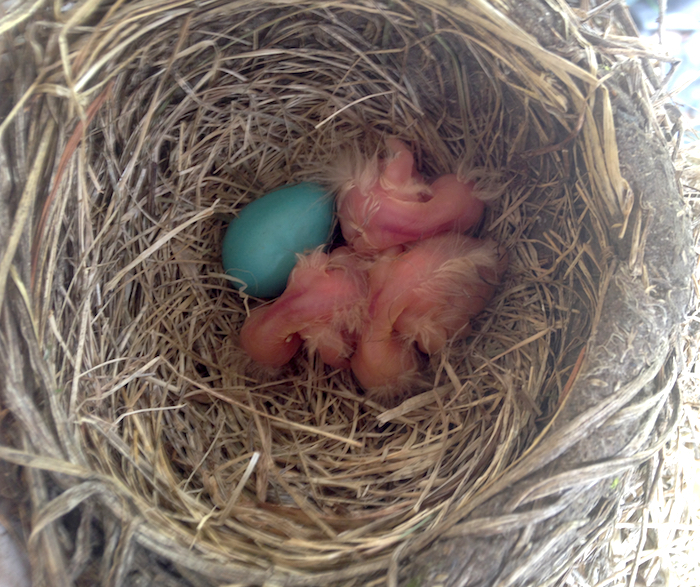
American Robin Nestlings
Like reptiles, who often bury their eggs, birds that nest in cavities and burrows usually have white eggshells. More exposed eggs are often speckled into camouflage. But some, like robin’s baby blues, are strikingly uncamouflaged even though exposed to the world and its predators. This presents another chicken-and-egg question: Which came first, the parenting or the color? Can protective parents like robins simply afford colorful eggs because they are dutifully present to shield their young, or did colorful eggs come first, with their demand for attentive parents? Does care, then, create beauty, or does need evoke care in successful species?
Other questions abound. Some eggs are oval, even round; others are conical. The hypothesis that conical eggs roll in a circle, and therefore are more likely among cliff-dwelling birds, isn’t really supported by the evidence. Another hypothesis is that since round eggs require less calcium to coat them, while pointier eggs can pack more tightly for incubation, the two shapes offer competing advantages; or perhaps it’s just that birds with more streamlined bodies can more readily lay thinner, pointier eggs.
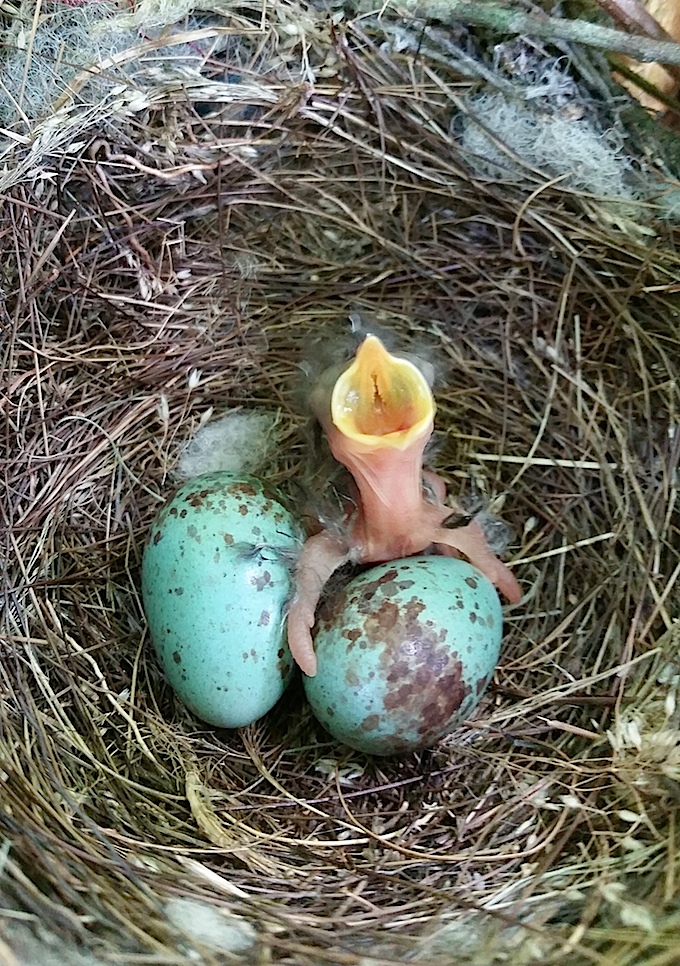
Northern Mockingbird Nest
This time of year, the most numerous bird on Earth, the domestic chicken, supplies the goods for more questions that many of us enjoy: How did you dye your eggs? Where did you find that one? What’s for breakfast? Or the worthy observation: aren’t eggs amazing and beautiful!

